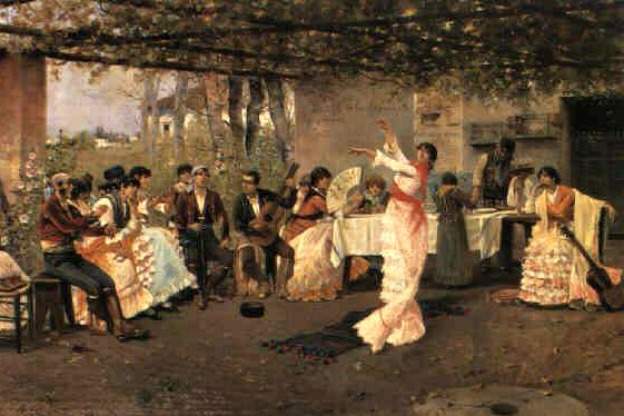
Las Idas y Las Vuealtas: Spanish Baroque meets flamenco. You’ve got to admit, the 2014 Glossa release has a pretty irresistible title—the content, it turns out, proves to be pretty irresistible too.
Flamenco Origins
So what exactly is Flamenco? Where did it come from, and especially, what are its musical origins? That there are a lot of ways to approach this question, and the article in New Grove offers this: “the origin of flamenco has been widely disputed…” That sentiment proves true. A Flamenco origin-of-species is a hard one to pin down. Tartessians, Phoenicians, Greeks, Romans, Byzantines, Arabs, Hindus, Moriscos, Africans, Spanish-Americans, gypsies and Andalusians all seem to have some claim to Flamenco’s roots.
But what happened in music between the amalgamation of these ancient roots, the Gipsy Kings 2013 Grammy winning, world-music-flamenco inspired-global-jazz-pop album??
The influences forming what we identify today as flamenco came together near the end of the 15th century, though the 18th century seems to have been when the genre enjoyed the most development.
Accademia del Piacere and Arcángel
The 2014 Glossa records recording we’re featuring today goes back to this time, 300 years ago, to the Spanish Baroque in a collaboration between the early music ensemble Accademia del Piacere led by viola da gambist Fahmi Alquai, and a modern day flamenco performer who goes simply by the name Arcángel.
Instead of borrowing and presenting old and new traditions side by side, these musicians fuse their musical approaches together. What results is early music that doesn’t necessarily recreate an “as it would have been heard back then” program. But in some sense, the result is one that feels more authentic rather than less. In essence, the rules go out the window, and with that, comes a certain freedom where passion trumps performance practice.
Ida y vuelta
The recording's title, Las idas y las vueltas is not an insignificant one. As it relates to a liminal culture, the idea of ida y vuelta is one of exchange, of mixing, of ‘going there and back again…' Ida y vuelta are known as return songs, that is cross-enculturated music that went out to the new world during colonization, and returned to Spain in a new form having absorbed musical influences and traditions from various peoples.









